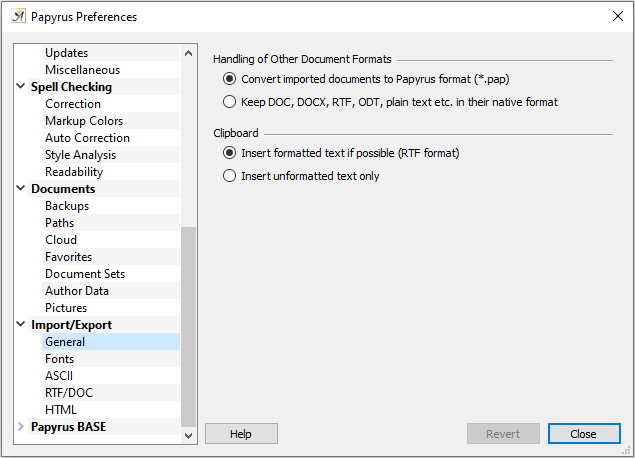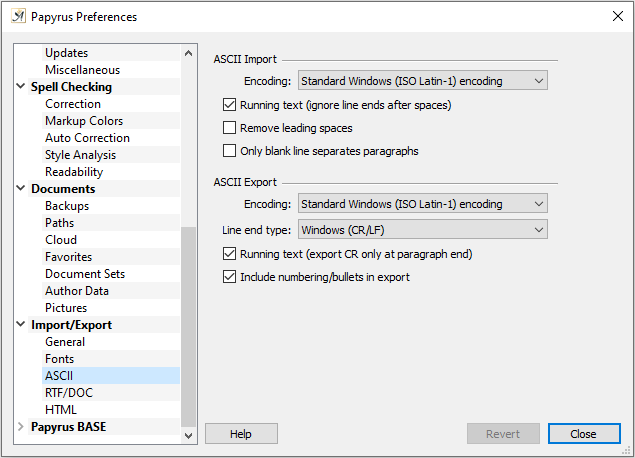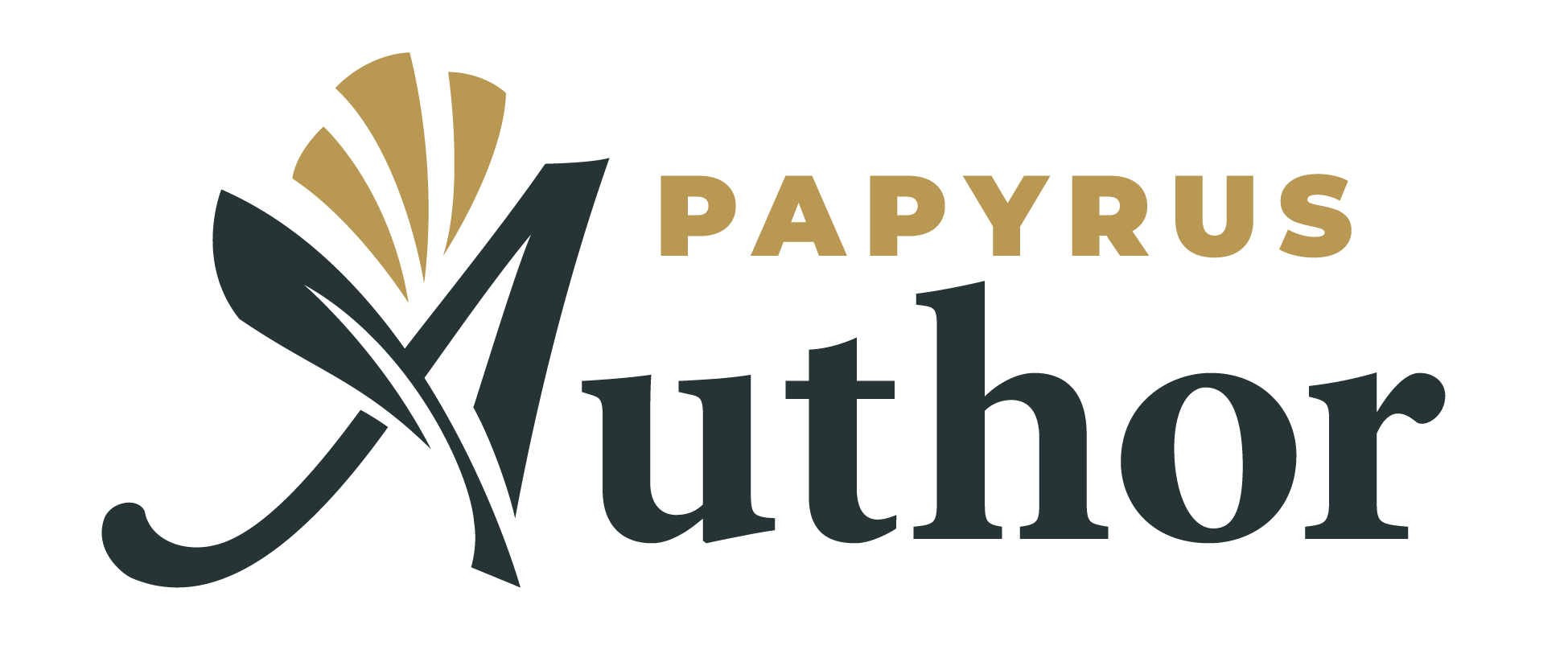Table of Contents
Working together with colleagues and editors is an integral part of the writing process and it has to run smoothly, no matter if your colleagues use another program, for example MS Word.
Alternatively, you can drag a document and drop it into Papyrus Author with your mouse, which will open it in a new tab.
Our reference for the import/export function is MS Word, in all its varieties. Your style templates, text and page layout, tables and even revision tracking, will all “come with” when you import/export your document.
We have also optimized the import and export of other “doc” documents, like OpenOffice / LibreOffice for example. Though, of course, only up to the point that the compatibility with MS Word is not impaired.
In order to exchange documents with other programs, such as Adobe InDesign, Papyrus Author can also handle the ASCII formats (“txt” etc.) as well as “rtf” (see the “ASCII” Settings ).
Be aware that MS Word calculates differently regarding the height of the line when the line spacing is set on the standard “one-and-a-half spaced” and “double spaced.”
In Papyrus Author, with a font size of “12,” “one-and-a-half spaced” is .67″, “double spaced” is .90″ and “single spaced” is .45“.
In-depth “Import/Export” settings can be accessed in the Papyrus Author “Properties” → “Import/Export.”
Import/Export “General” Settings (Converting a Text Into the Papyrus Author Format)
In this dialog you can choose how other file formats should be handled and how they should appear in the file selection dialog: should they be converted to the Papyrus Author format (*.pap) or should they be left in the native DOC, DOCX, RTF, HTML, or ASCII formats?

General Import/Export settings
Then there is the Clipboard setting that influences copy / paste functions between programs. Here you can choose whether Papyrus Author should insert formatted RTF or Unicode text if possible (our recommendation), or whether you would rather have only unformatted text (ASCII format), which is a setting you can use if formatting problems occur when you copy and paste.
RTF/DOC Settings
When you find that import or export results are different to your expectations, you can try setting “Use alternative filter for DOC” for either import or export. This will use a second engine to load or save DOC and Docx files and can yield different, possibly more fitting, results. For most cases, the default filter is better-suited.
There is also an option to determine how your graphics will be displayed in RTF / DOC format. We recommend that you use the slimmer binary format when you know that your text recipient will be able to read your RTF and DOC texts with binary pictures without any problems. Otherwise, use the hex encoding.
ASCII Settings
For “ASCII Import” you can choose whether the text should be opened as “ ![]() Running text (ignore line ends after spaces).” This will remove the line breaks in every line. You can also choose to “
Running text (ignore line ends after spaces).” This will remove the line breaks in every line. You can also choose to “ ![]() Remove leading spaces,” which removes space before the beginning of a line, or choose the option “
Remove leading spaces,” which removes space before the beginning of a line, or choose the option “ ![]() Only blank line separates paragraphs.”
Only blank line separates paragraphs.”

ASCII Import/Export settings
To choose settings for “ASCII Export” of entire Papyrus Author documents or only selected blocks of text (choose “save as…” in the menu File and choose *.TXT in the file selection dialog):
The “Line end type” can be a different combination of the ASCII character CR (Carriage Return, ASCII Value 13) and LF (Line Feed, ASCII Value 10); it can vary according to your system. Thus, in this dialog you can choose whether you would like your line ends of imported ASCII text to appear like those for “DOS / Win (CR/LF),” for “Mac (CR),” or for “UNIX (LF).”
You can also select whether Papyrus Author should insert a hard line break at the end of each line of text, or whether it should also export the ASCII text as “Running text (export CR only at paragraph end).”
Lists are shown in Papyrus Author with bullets or numbers, but these numbers and bullets are not actually “there,” but rather appear only in the formatting. This means that when you export to ASCII these numbers and bullets are missing unless you tell Papyrus Author to convert to plain text and “ ![]() Include numbering/ bullets in export.”
Include numbering/ bullets in export.”
Under “Encoding” you can set the “code page,” which is a table of values used by an operating system to read the letters and numbers in your text.
This is a good idea if, for example, you want to save a text for a UNIX computer and intend to open it with a program that can only understand UNIX ASCII text.
